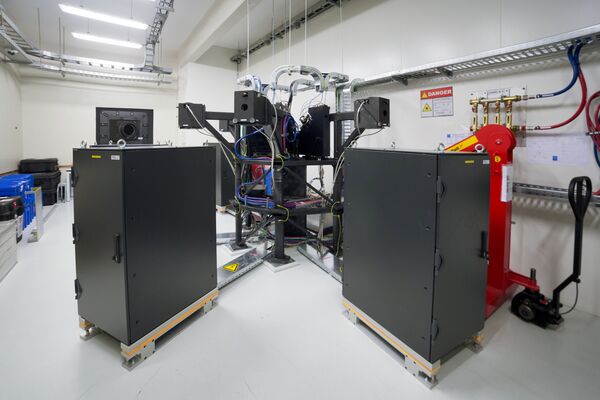A rare glimpse of a rocky, Earth-sized world void of atmosphere and located far beyond our own solar system has been offered as part of a study based on direct observations from a NASA space telescope that published its findings in the scientific journal Nature.
The research shows the mysterious distant planet’s surface, possibly covered in dark volcanic rock, is likely to resemble the barren exterior of the Earth’s Moon or Mercury.
The exoplanet was detected last year by NASA’s newly launched Transiting Exoplanet Survey Satellite.
This orbiting telescope pinpoints distant worlds by spotting periodic dips in light observed from their parent stars when an object passes in front of them.
Follow-up observations from the Spitzer Space Telescope, able to detect infrared light directly from an exoplanet, have offered exciting new information about the exoplanet.
About 48.6 light years from Earth, this celestial object is one of more than 4,000 so-called exoplanets circling distant stars in the Milky Way, identified over the past two decades.
LHS 3844b, as astronomers identify it, is an exoplanet about 1.3 times the size of Earth, which is locked in a tight orbit. This means it makes one revolution every 11 hours around its small, relatively cool star called a red dwarf. These red dwarfs are the most numerous and enduring type of star in the galaxy.

The planet’s lack of atmosphere is likely due to intense radiation from its parent red dwarf, which also emits high levels of ultraviolet light, the study says.
The principal finding of the study is that the exoplanet probably possesses little if any atmosphere. This is surmised from measurements of temperature differences between the side of the planet perpetually facing its star, and the cooler, dark side facing away from it.
Negligible amounts of heat transferred between the sides indicates a lack of wind that would otherwise be present.
“The temperature contrast on this planet is about as big as it can possibly be", said lead author of the study, researcher Laura Kreidberg of the Harvard-Smithsonian Centre for Astrophysics in Cambridge, Massachusetts.
The data offered by the new study is expected to feed into the existing debate among astronomers on whether observations to find life-sustaining conditions beyond our solar system should target exoplanets around red dwarfs - accounting for 75% of all stars in the Milky Way - or the less common, larger and hotter stars resembling our Sun.


